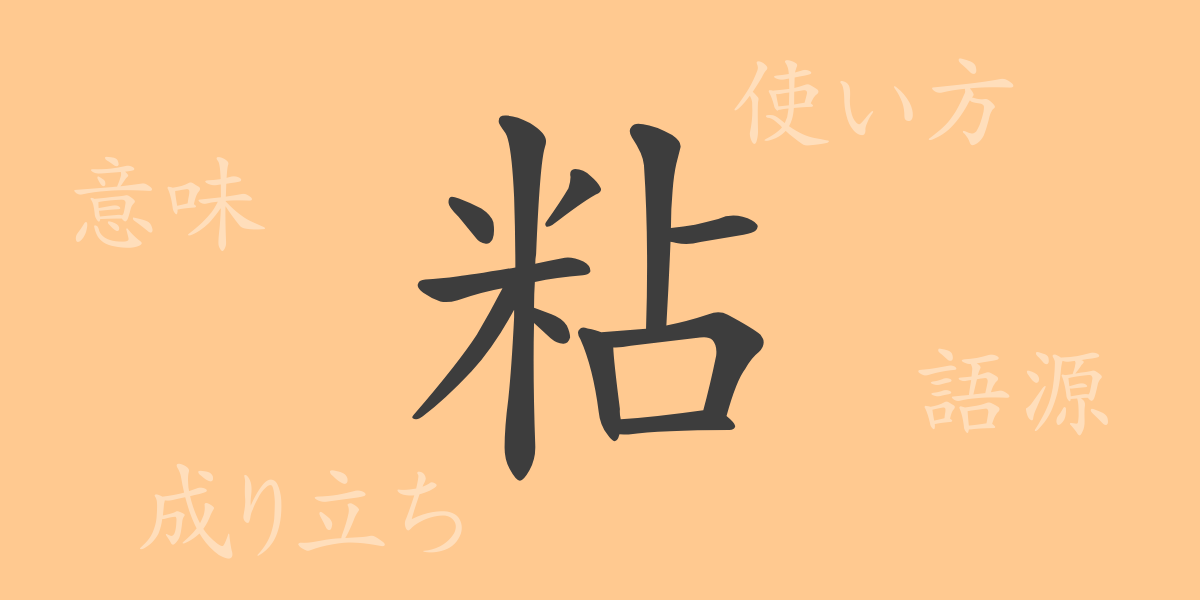Each Kanji character in Japanese embodies a rich history and profound meaning. Among them, ‘粘 (ねん)’ frequently appears in our everyday lives. This article delves into the origins, meanings, usages, and related phrases of the Kanji ‘粘’, enriching understanding for both language learners and those interested in Japanese culture.
Origins of ‘粘 (ねん)’
The Kanji ‘粘’ originated in ancient China, initially representing clay or viscous substances. It is composed of the part ‘米 (こめ)’, meaning rice, and the phonetic indicator ‘占’, reflecting its association with the stickiness of rice-related substances. Over time, ‘粘’ evolved to encompass metaphorical meanings, such as perseverance and tenacity, in addition to physical viscosity.
Meaning and Usage of ‘粘 (ねん)’
‘粘’ primarily conveys ‘sticky’ or ‘tenacious’. It describes materials that are between solid and liquid states—viscous in nature—as well as people who persevere without giving up. Commonly, it is used as an adjective ‘粘り気 (ねばりけ)’, describing viscous properties, and ‘粘り強い (ねばりづよい)’, describing a tenacious character or behavior.
Readings, Stroke Count, and Radical of ‘粘 (ねん)’
Essential details of the Kanji ‘粘’ are as follows:
- Readings: On’yomi ‘ネン’, Kun’yomi ‘ねば-る’, ‘ねば-り’
- Stroke Count: A total of 11 strokes.
- Radical: The radical is ‘米部 (こめへん)’ related to rice.
Phrases, Idioms, and Proverbs Using ‘粘 (ねん)’
There are numerous idioms and proverbs incorporating ‘粘’, each symbolizing the richness of the Japanese language. For example, ‘粘土 (ねんど)’ refers to clay, ‘粘膜 (ねんまく)’ to mucous membranes, and ‘粘り強い (ねばりづよい)’ to someone who is persistently diligent. The phrase ‘粘りのある話 (ねばりのあるはなし)’ often describes a conversation that drags on.
Conclusion on ‘粘 (ねん)’
Understanding a single Kanji through its applications and origins can deepen our appreciation of its meanings. ‘粘’ not only represents the physical characteristics of substances but also the mental attributes of humans, making it a widely used character across various contexts. Through ‘粘’, we can perceive the depth of the Japanese language and the delicate sensibilities of the Japanese people toward words.

























